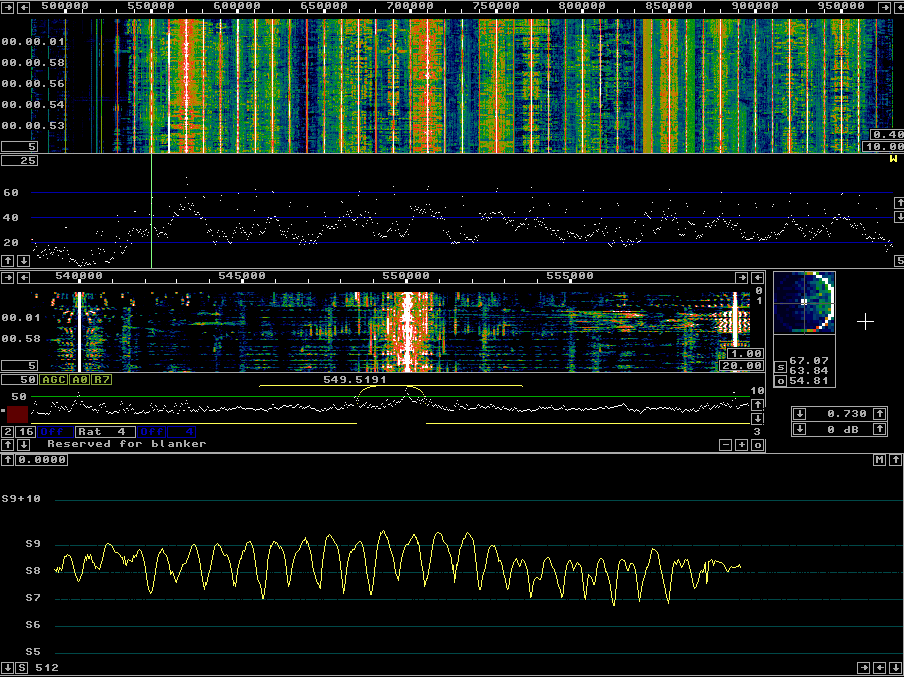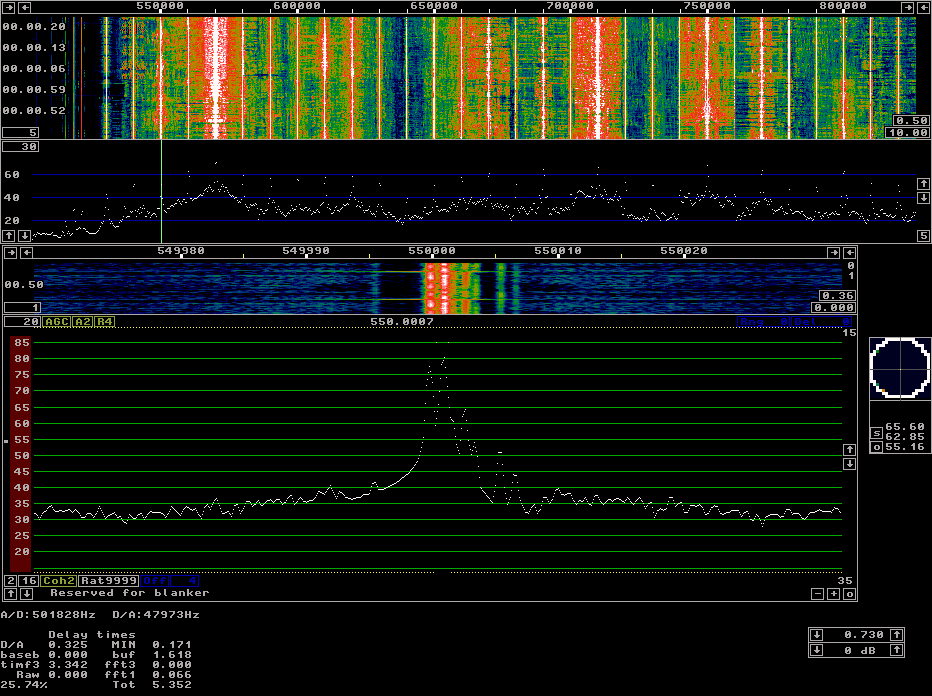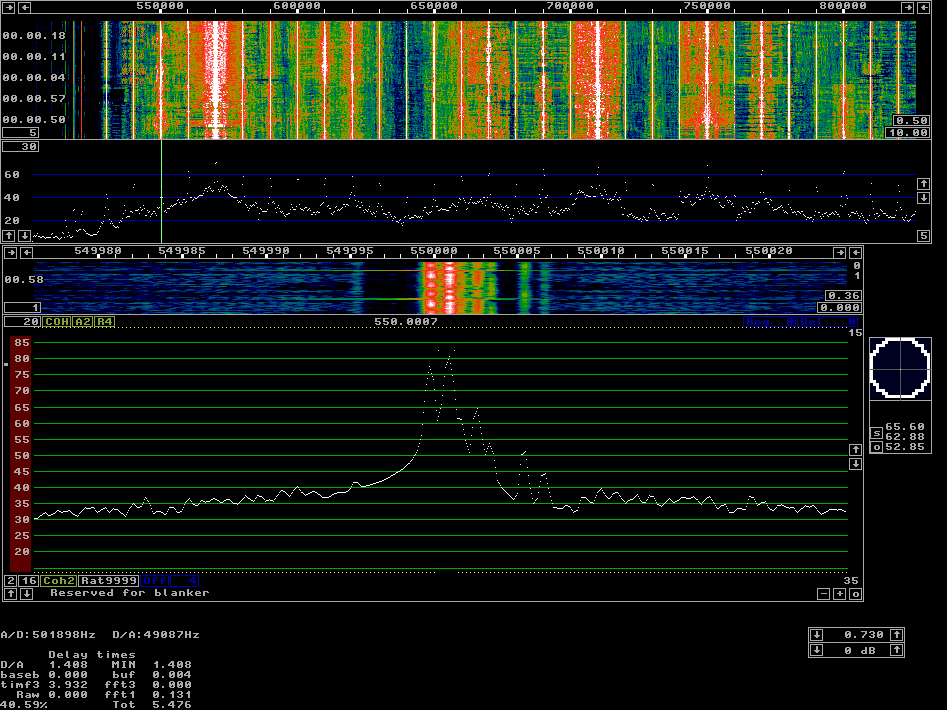|
Detecting mediumwave AM.
AM broadcast stations are channelized and one can often hear two
stations on the same frequency.
In case the carriers have similar amplitudes they will nearly cancel
each other at times when they are out of phase.
Loosing the carrier is not good for detecting AM signals with
a conventional AM detector.
The carrier frequency of two stations on the same channel may differ
slightly, but not much.
The example on this page is two stations with a frequency separation
of about 1 Hz.
This frequency separation is too large to cause severe distortion
in a conventional AM detector because the duration of the minima
where the carrier is lost is very short.
Contrary to shortwave DX, mediumwave stations often do not exhibit
selective fading and that means that both sidebands are equal in
amplitude and in phase.
This means that it is possible to insert a synthetic carrier of the
correct phase to replace the perturbed carrier while receiving
both sidebands.
By use of a quadrature detector one can get the AM modulation
as the in-phase signal I.
At times when the second station is 90 degrees relative to
the synthetic carrier, its modulation will be present in
the out-of-phase channel Q
A wideband recording.
This file
http://sm5bsz.com/linuxdsp/usage/kari/530-930khz.zip (149254963 bytes)
is a zipped .wav file that was recorded on February 23, 2008, starting
at 0459:30 UTC by Guy, KE7MAV on a Perseus HF receiver in Puyallup,
Washington USA.
The recording is centered at 730 kHz.
Linrad can not read the frequency information from the Wav file
so it is necessary to feed in the correct center frequency 0.73 MHz by hand.
Figure 1 shows the Linrad screen when processing the file with a conventional
AM detector in a filter bandwidth of 8 kHz.
Listen to the loudspeaker output in this file:
amdet.mp3 (958380 bytes)
About 40 seconds into the file one can easily hear a male voice
saying some numbers behind the music from the other station.
Listen a couple of times and write down what you can copy.
Also try with other software at your disposal to see if you
can copy more numbers.
|





